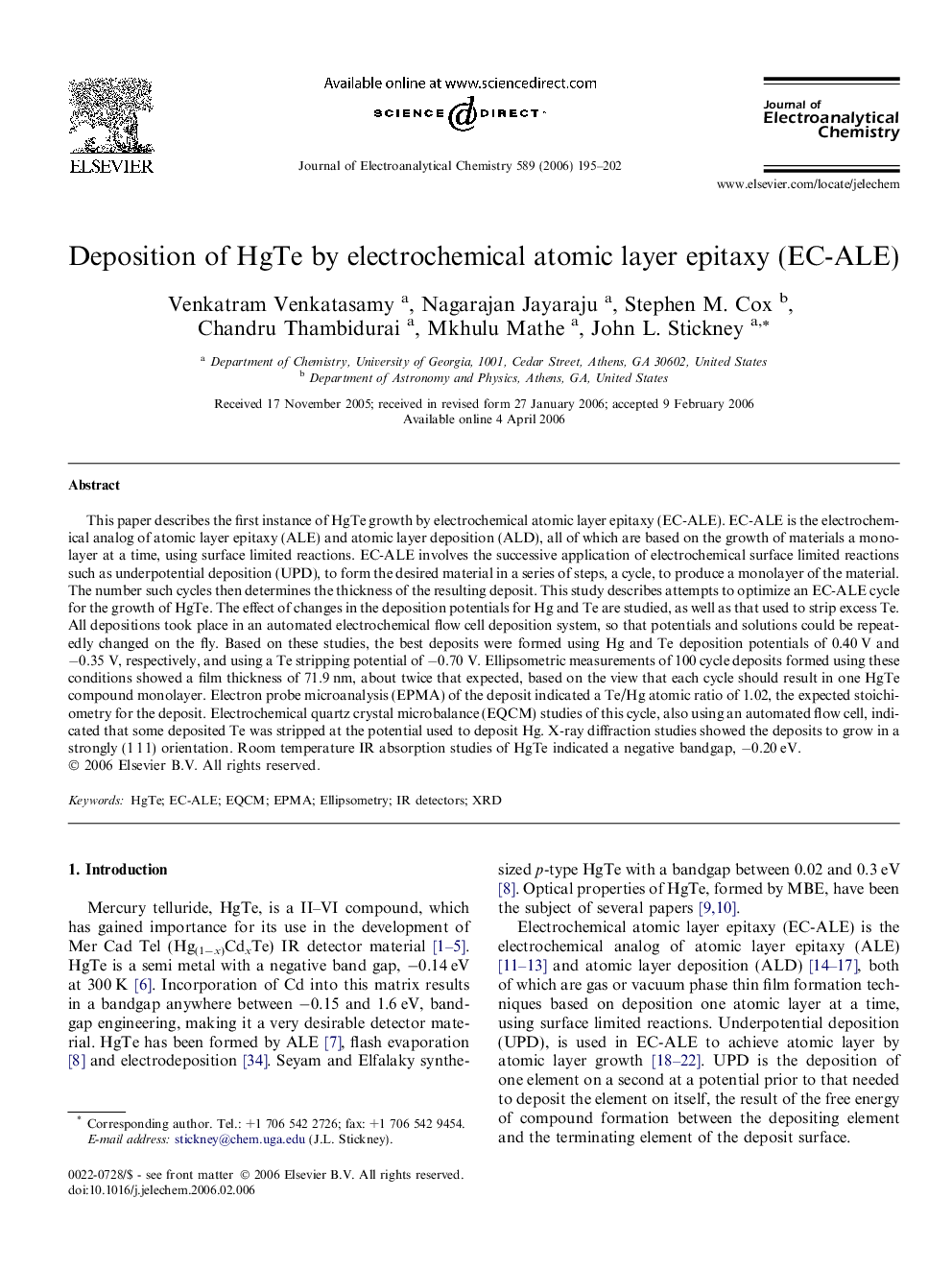| کد مقاله | کد نشریه | سال انتشار | مقاله انگلیسی | نسخه تمام متن |
|---|---|---|---|---|
| 221318 | 463385 | 2006 | 8 صفحه PDF | دانلود رایگان |

This paper describes the first instance of HgTe growth by electrochemical atomic layer epitaxy (EC-ALE). EC-ALE is the electrochemical analog of atomic layer epitaxy (ALE) and atomic layer deposition (ALD), all of which are based on the growth of materials a monolayer at a time, using surface limited reactions. EC-ALE involves the successive application of electrochemical surface limited reactions such as underpotential deposition (UPD), to form the desired material in a series of steps, a cycle, to produce a monolayer of the material. The number such cycles then determines the thickness of the resulting deposit. This study describes attempts to optimize an EC-ALE cycle for the growth of HgTe. The effect of changes in the deposition potentials for Hg and Te are studied, as well as that used to strip excess Te. All depositions took place in an automated electrochemical flow cell deposition system, so that potentials and solutions could be repeatedly changed on the fly. Based on these studies, the best deposits were formed using Hg and Te deposition potentials of 0.40 V and −0.35 V, respectively, and using a Te stripping potential of −0.70 V. Ellipsometric measurements of 100 cycle deposits formed using these conditions showed a film thickness of 71.9 nm, about twice that expected, based on the view that each cycle should result in one HgTe compound monolayer. Electron probe microanalysis (EPMA) of the deposit indicated a Te/Hg atomic ratio of 1.02, the expected stoichiometry for the deposit. Electrochemical quartz crystal microbalance (EQCM) studies of this cycle, also using an automated flow cell, indicated that some deposited Te was stripped at the potential used to deposit Hg. X-ray diffraction studies showed the deposits to grow in a strongly (1 1 1) orientation. Room temperature IR absorption studies of HgTe indicated a negative bandgap, −0.20 eV.
Journal: Journal of Electroanalytical Chemistry - Volume 589, Issue 2, 15 April 2006, Pages 195–202